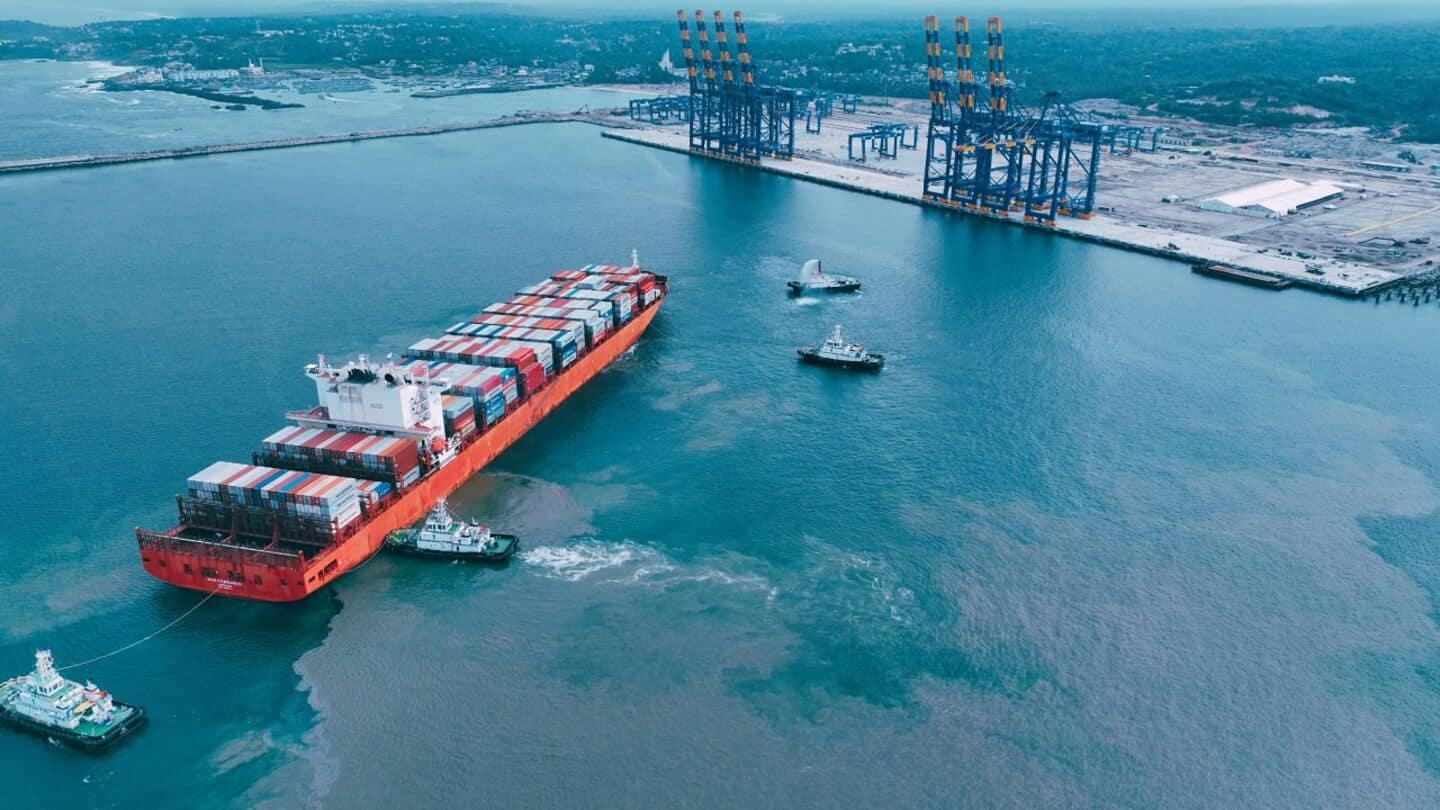
World's largest container ship docks at Kerala's Vizhinjam port
What's the story
In a historic first for South Asia, the world's largest container ship, MSC IRINA, has docked at the Vizhinjam International Seaport in Kerala. The vessel is operated by Switzerland-based Mediterranean Shipping Company (MSC) and sails under the Liberian flag. With a length of 399.9m and a width of 61.3m, it is nearly four times longer than a standard FIFA football field and can carry up to 24,346 TEUs (Twenty-foot equivalent units).
Significance
Historic milestone for India's maritime capabilities
This is the first time such a large vessel has docked at a South Asian port, marking a major milestone for India's maritime capabilities. The ship's arrival also demonstrates Vizhinjam's ability to handle Ultra-Large Container Vessels (ULCVs). Launched in March 2023 and deployed on its maiden voyage in April 2023, the ship is designed for maximum efficiency and can stack containers up to 26 tiers high. The ship surpasses its predecessor, OOCL Spain, by a margin of 150 TEUs.
Sustainability
MSC Irina reduces carbon emissions by up to 4%
In line with modern environmental norms, MSC Irina is equipped with energy-efficient technologies that help reduce carbon emissions by up to 4%. This significantly lowers its carbon footprint while ensuring operational efficiency. The ship offers direct connectivity to European ports such as Valencia, Barcelona, and Gioia Tauro. It will considerably cut costs and delivery lead times for imports from China and exports to Europe.
Trade impact
Vizhinjam port enhances global shipping landscape
The docking of MSC Irina at Vizhinjam International Seaport not only emphasizes the port's strategic role in global shipping but also represents a step forward in sustainable maritime practices. The ship started its voyage from China to South Korea and again to China and Singapore before reaching Vizhinjam. This route allows time-sensitive cargo like perishable goods and industrial accessories from South India's hinterland easy access to European ports.